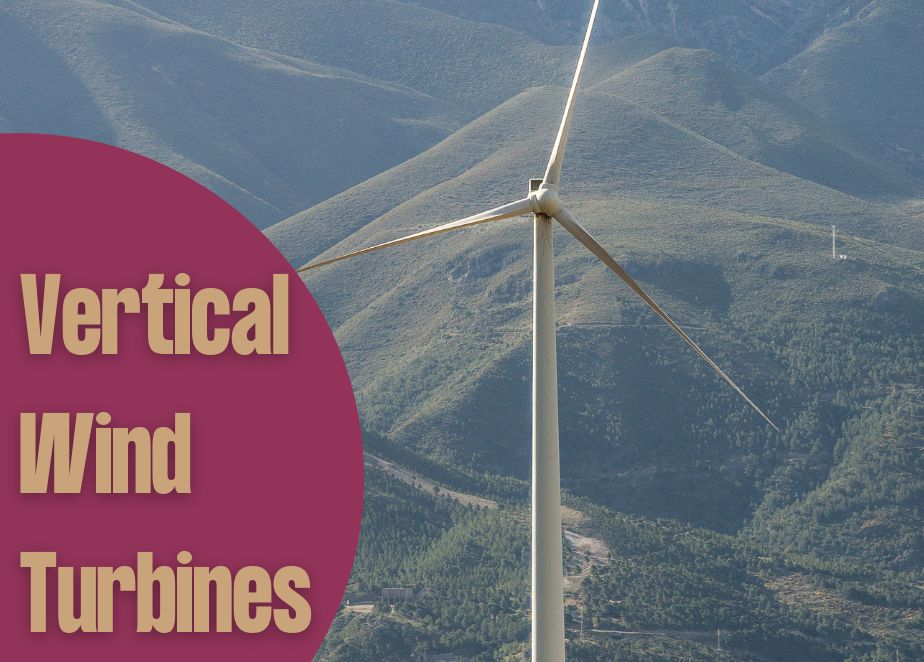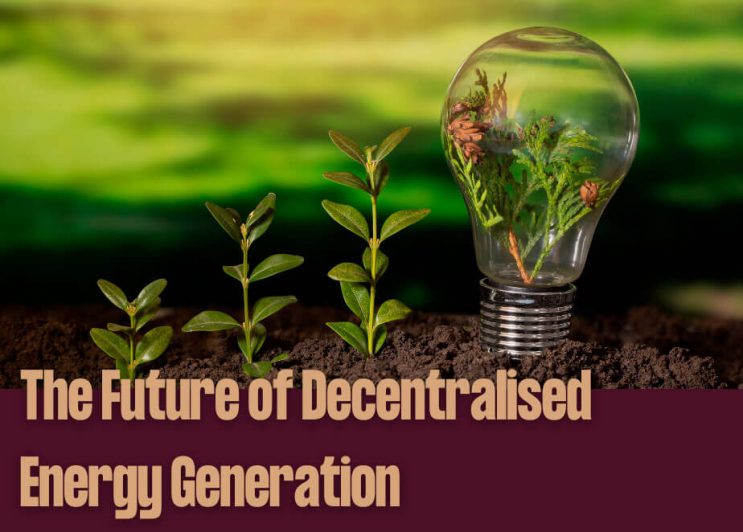Vertical Axis Wind Turbines

Producing energy from wind – humankind’s oldest solution
Human beings have been using the power of the wind to make things rotate to do useful work since the 8th century. By the 11th-century wind power was in common use all over Europe, predominantly to turn the grinding wheels of flour mills or to pump water. Then in the 19th century almost as soon as science had discovered how to harness electricity, windmills were being put to use to drive electrical generators, and the wind turbine industry was born.
Vertical axis or horizontal axis?
Today, wind power is a rapidly accelerating renewable energy sector with dozens of different turbine models all vying for a slice of what is becoming an extremely lucrative economic pie. Essentially though, designs fall into one of two categories: Vertical Axis Wind Turbines (VAWTs) or Horizontal Axis Wind Turbines (HAWTs).
The ‘Axis’ in the name relates to the orientation of the shaft and the rotor being turned by the blades. The classic wind turbines that we see in our countryside and along our coastlines fall into the Horizontal Axis category. They have rotors and shafts that are mounted horizontally, parallel to the direction of the wind.
Vertical Axis turbines are much less common. They have shafts and rotors that are mounted vertically or perpendicular to the direction of the wind. These designs rely on cleverly engineered blades that are shaped to catch the wind as it passes through, causing rotation around the vertical axis to drive an electrical generator.
Advantages of VAWTs
In a HAWT design, complicated turbine components like generators and gearboxes are located in the nacelle right at the top of the tower so that they can be directly driven by the sweeping blades. That makes those components difficult and expensive to access and maintain. A VAWT turbine houses those components at the base of the vertical shaft, close to ground level, which makes access much easier.
VAWT designs also tend to have simpler blade geometry. The classic long white blades we see on horizontal wind turbines have to be tapered and twisted in order to get the best performance from different air speeds and directions along their vast length. The largest horizontal turbine blades in operation today can be up to 200 metres long. That also means they have to be super strong and super flexible in order to cope with the enormous loads being imposed upon them. By contrast, VAWT turbine blades are supported along the entire length of the vertical shaft, so they do not have to cope with anything like the stresses and strains experienced by their horizontal axis counterparts. Vertically mounted blades also receive the same wind speed along their entire length, which means their design and geometry can be far simpler and therefore less expensive to manufacture.
An additional feature of VAWT turbines is that they tend to be far quieter in operation than HAWTs. Wind noise from turbines is strongly related to the speed at which the blade tips are rotating. The tips of a large modern HAWT turbine can typically be moving as fast as 300kph, and that generates a lot of noise! Vertically mounted blades do not get anywhere near that speed, so the decibel output from VAWTs is far lower.
Unlike HAWT turbines, which are equipped with what’s known as a yaw system to turn the rotating blades into the prevailing wind, VAWT designs don’t care which direction the wind is coming from because their vertical blades can pick up air movement from any direction. That means one less component to manufacture and one less manoeuvre to perform during operation, all of which reduces the comparative cost of VAWTs vs HAWTs.
Why don’t we see VAWTs everywhere?
With all these advantages, it’s easy to wonder why we don’t see VAWTs more often. The answer lies in the basic resource that drives them – the wind itself, and more specifically the relationship between wind speed and power generated. The equation to calculate wind power tells us that the maximum power available is a function of the wind speed cubed. That means if you double the wind speed you potentially have eight times the amount of energy available. Wind speeds tend to be faster at higher altitudes and winds tend to be far more consistent across uninterrupted terrain like rolling countryside and the surface of the sea. That’s why horizontal axis turbines are located in those areas and why they are becoming taller and taller. One of the world’s largest wind turbines, made by the Danish company Vestas, is almost as tall as the Eiffel Tower. It is a true behemoth with a power generation capacity of 15MW, providing enough energy to run 20,000 European homes, saving more than 38,000 tonnes of carbon dioxide emissions, equivalent to removing 25,000 passenger cars from the road.
So why not simply make vertical axis turbines as tall as horizontal axis turbines, in order to produce the same amount of power? The answer is – it’s complicated! A typical VAWT turbine has two or perhaps three vertical curved blades. Imagine an oil drum sliced vertically down its centre line, with each half mounted on either side of a pole. The main issue with this setup is that as one blade is being pushed forward by the wind on the ‘upwind’ part of its rotation, the second blade is effectively being pushed backwards on the ‘downwind’ part of its rotation. That causes drag, which significantly impacts the efficiency of the turbine. That means these drag turbines, otherwise known as Savonius Turbines, can only achieve about half the theoretical maximum efficiency of a horizontal axis turbine. So, making them bigger does not tend to take advantage of that cubing factor in higher wind speeds.
To try to overcome this problem, turbine designers came up with an alternative design, known as ‘lift’ or Darrieus turbines. The blades of these turbines are shaped more like a vertical version of an aeroplane wing, giving an overall impression of a device that looks a little like an egg whisk. These configurations can capture some of the energy from the downwind side as well as from the upwind side. Even so, the best VAWT turbines currently in operation today have only reached efficiencies between 30% and 40%, compared to as much as 50% for the largest horizontal axis turbines.
The Flower Turbine.
One example of a commercially available Savonius VAWT is the Flower Turbine, manufactured by a company of the same name. These turbines are designed to look more like an art installation than a power generator, with an elegant design that resembles the head of a Tulip. The units are produced in a variety of sizes, from a basic turbine about a metre in height that can be used to charge up small domestic appliances, all the way up to 6-metre turbines that are designed to be integrated into utility-scale grid systems.
A medium domestic-sized unit is 2.8 metres high and can be bolted to the side of a house or, with the relevant permissions in place, can even be mounted onto the roof. Flower Turbines claim these medium units have a power rating of 1000 Watts, which in theory is more than 3 times the capacity of a standard 300 Watt domestic solar PV panel.
Not so fast.
Flower Turbines are not alone. The market for VAWT turbines is already quite crowded. There are myriad different aesthetic designs all claiming to provide the answer to micro-generation at a very low cost. Not everyone is convinced though. Critics of these designs point out that achieving the rated maximum generation capacity requires wind speeds of more than 12 metres per second, or 43 kph, which is extremely rare in an urban environment. At the more achievable wind speed of 5 metres per second or 18 kph, Flower Turbines claim a cluster of their 2.8m turbines can generate 85 Watts of power per unit. Turbine blades can continue to turn during the evenings though when solar PV panels are becoming less effective and wind speeds are typically higher. And if that wind prevails, those turbines will continue to generate power long after the sun has set, and solar PV panels have stopped working completely. Turbines are also much more likely to generate power reliably during the dark months of winter when solar PV is at its least productive.
VAWTs and the urban environment.
Although VAWTs are generally less efficient than HAWTs, they do still generate useful energy. And the fact that they don’t need large sweeping blades means they have a vastly smaller footprint than HAWTs. This combined with very low noise levels makes them a very attractive option in urban environments. In tests, the rotating blades of the Flower Turbine were apparently so quiet that it was not possible to distinguish the noise of the turbine from the background ambient noise. And as a very welcome added bonus, the shape of vertical turbines like these means they pose far less of a threat to flying wildlife than their larger horizontal competitors. That ability to operate safely and seamlessly in urban areas opens up a whole world of possibilities for decentralised distributed power generation and localised community grid systems.
Conclusion
The reality is that the green energy transition will not be characterised by a single centralised power generator as has been the case until now. Societies will need to embrace multiple sources of power, all working together as part of distributed smart grids coordinated by so-called ‘Internet of Everything’ cloud-based control systems moving power instantly and seamlessly from one place to another as and when it is called for. Large horizontal axis wind turbines will play a major role in the transition to this new type of system, but small localised generators like solar panels and vertical axis wind turbines, combined with battery energy storage, look set to become equally vital as we move towards a more sustainable world.
Strathsquare is a seed stage project initiator that provides required resources to entrepreneurs and innovators. We are driven by a sense of urgency to transition away from unsustainable technologies and processes, we believe that what we do should have a genuinely positive impact on society and our environment.
If you have an innovative idea
We are committed to supporting innovators who have the potential to make businesses more sustainable and for all.


